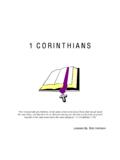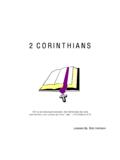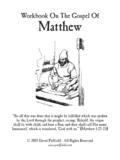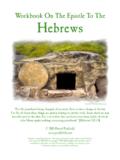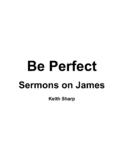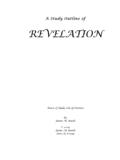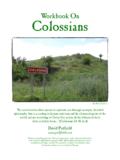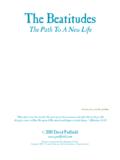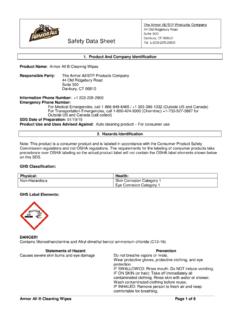Transcription of “Soldiers Of Christ, Arise” - padfield.com
1 Soldiers Of christ , Arise 2008 David Finally, my brethren, be strong in the Lord and in the power ofHis might. Put on the whole armor of God, that you may be ableto stand against the wiles of the devil. (Eph. 6:10 11) Soldiers Of christ , Arise Introduction I. Near the end of his life, Roman soldiers constantly surrounded the apostle Paul. A. He lived in the presence of the greatest military power ever known. B. Night and day a soldier was with Paul to ensure he would not escape. C. The Roman legion is considered the world s first professional army. D. The Roman imperial army was the earliest of the world s standing armies in which the soldiers were regularly recruited, and cared for, and finally pensioned off, by the state. (Michael Grant, The Army of the Caesars, p. xv). E. Their armor was distinctive, and with it they subdued the world. F. Paul used figures of speech that reflected what he saw daily.
2 G. He told Timothy to wage the good warfare (1 Tim. 1:18) and to endure hardship as a good soldier of Jesus christ (2 Tim. 2:3). II. Christians are to put on the whole armor of God (Eph. 6:10 20). A. The words translated as whole armor (Gr. panopli a, panoplia) denote the whole armor of the heavily armed legionary. B. We must position ourselves to stand for the truth (Eph. 6:11, 13 14). 1. Unblemished in character. 2. A genuine zeal that is tempered with wisdom. 3. Knowledgeable of the word of God. C. The welfare of the cause of christ depends upon us making a stand. D. Since we are not fighting a fleshly battle, our weaponry must not be carnal. Discussion I. The Armor Of God A. The girdle of truth (Eph. 6:14). 1. This was not an ornament it bound the other pieces together and gave the soldier freedom of movement. 2. In a culture where the people wore long loose-fitting robes, garments were tied close to the body when quick action was required.
3 Here, the believer is summoned to stand, therefore, literally, having girded (perizo nnymi) your loins in truth (New International Biblical Commentary, Hendrickson Publishers). 3. We move about this world more freely because we know the truth! 4. Isaiah portrays the Messiah as wearing the belt of righteousness around His waist and faithfulness as the sash around His body (Isa. 11:5). 5. The center of our armor is truth (John 17:17). 6. The NIV renders this clause as: with the belt of truth buckled around your waist (Eph. 6:14). B. The breastplate of righteousness (Eph. 6:14). 1. On first century reliefs only the centurions had a metal cuirass (breastplate); the common foot soldier had a leather corselet with leather shoulder pieces. 2. The breastplate of a Roman spearman was used to protect the heart and other vital organs. 3. God Himself wears righteousness like a breastplate (Isa.)
4 59:17). Soldiers Of christ , Arise 2 4. Our heart covered by righteousness (Psa. 119:11). 5. Words are no defense against accusations, but a righteous life is. C. Feet shod with the gospel of peace (Eph. 6:15). 1. But most important of all were his heavy boots (caligae), or rather sandals, which were in many ways more serviceable than modern army boots. Their soles, made of several layers of leather and heavily studded with hollow-headed nails, varied considerably in thickness; perhaps three-quarters of an inch was about the average. Strips of cloth or fur were sometimes placed inside the sandals, and they were fastened to the foot by ankle thongs. (Michael Grant, The Army of the Caesars, p. xx). 2. The military successes both of Alexander the Great and of Julius Caesar were due in large measure to their armies being well shod and thus able to undertake long marches at incredible speed over rough terrain.
5 (The Expositor s Bible Commentary). 3. These boots would give the soldier a firm footing during battle. 4. They were designed to make it difficult to walk backwards. 5. Our sound footing must be supplied by the gospel of peace (Rom. 10:15; Isa. 52:7). D. Taking the shield of faith (Eph. 6:16). 1. Roman shields were composed of leather or wicker. 2. The normal size was four feet high by two and a half feet wide. 3. The word Paul uses is not that for the comparatively small round shield; it is that for the great oblong shield which the heavily armed warrior wore. One of the most dangerous weapons in ancient warfare was the fiery dart. It was a dart tipped with tow dipped in pitch. The pitch-soaked tow was set alight and the dart was thrown. The great oblong shield was made of two sections of wood, glued together. When the shield was presented to the dart, the dart sank into the wood and the flame was put out.
6 Faith can deal with the darts of temptation. With Paul, faith is always complete trust in christ . When we walk close with christ , we are safe from temptation. (William Barclay, The Letters to the Galatians and Ephesians, p. 183). 4. Early legionary shields were oval in shape but in the 1st century they became rectangular, although curved to fit the body. A legionary shield (scutum) was made of thin sheets of wood glued together and bound round the edges with wrought iron or bronze. The center was hollowed out for the hand grip which was protected by a metal boss. The outer surface of the shield was covered with leather on which were fastened decorative bronze plates. (Leslie and Roy Adkins, Introduction to the Romans, p. 39). 5. The change from small round to large rectangular shields meant the soldiers no longer needed to wear greaves (shin-pieces), and thus their mobility greatly increased.
7 6. The testudo (tortoise formation) was a formation used commonly by the Roman Legions during battles, particularly sieges. Soldiers Of christ , Arise 3 7. Lastly, a word must be said about the testudo, which could be used either in advance or retreat against a violent attack of hostile weapons. The soldiers of the front rank, closely linked together, protected themselves by holding up their shields in front of them as screens, while the rear ranks raised their shields above their heads, and in this way produced an artificial roof, against which javelins and spears might strike with impunity. The success of this formation depended upon the men keeping close together, so as to avoid any gaps in the barrier of shields. Such a disposition might be employed instead of the orbis in a retreat under fire, but it was most commonly used by detachments advancing to the siege of a town or a camp.
8 ( Parker, The Roman Legions). 8. Our enemy does not always attack directly (Heb. 11:32 38). E. The helmet of salvation (Eph. 6:17). 1. This headgear was generally of bronze, fitted inside with an iron skullcap lined with leather or cloth. 2. We are to take this helmet from God it is our salvation (Eph. 2:8 9). F. The sword of the Spirit (Eph. 6:17). 1. The offensive armor, as described by Josephus, consisted of the pilum or throwing-spear, the gladius or Spanish sword, and the pugio or dagger slung on the left and right sides respectively. (H. M. D. Parker, The Roman Legions, p. 251). 2. Weapons for attack included the pilum or javelin, two of which were carried by each man. The pilum was 7 ft. long, the top 3 ft. being of iron. The sword (gladius) was a double-edged weapon about 2 ft. long and 2 in. wide. Carried in a scabbard attached to a belt on the right-hand side of the body, it was a stabbing rather than a slashing weapon and designed for use in close fighting.
9 The scabbard was usually made of wood and leather held together by bronze. On the left-hand side of the body there was a dagger (pugio) in a bronze or iron scabbard suspended from another belt. Daggers seem to have been withdrawn from the legionary armory by the end of the 1st century. (Leslie and Roy Adkins, Introduction to the Romans, p. 39). 3. Weapon training was most important. The intelligent use of the sword is mentioned particularly in a surviving Roman training manual. The method taught was to thrust, rather than to slash at an opponent; for a slash-cut rarely kills, but a thrust makes a deep penetration of the vital organs. The Roman short sword was clearly designed for stabbing, with its sharp angled point, though it could be, and certainly was on occasion, used to effect cutting strokes. (Michael Simkins, Warriors Of Rome, p. 28). 4. Our only offensive weapon is the Word of God (Heb.)
10 4:12). 5. christ fought Satan in the desert with this weapon (Matt. 4:1 11). 6. We are never wasting our time when we are sharpening our swords don t let it get rusty. G. Our armor must be put on properly (Eph. 6:18). 1. The armor is to be donned with prayer (cf. Acts 4:29 31). 2. Pray always pray intensely pray for others. 3. We are foot soldiers God is in control. Soldiers Of christ , Arise 4 II. A Lesson From Rome A. The Jewish priest and general Flavius Josephus lived during the zenith of Rome s military glory. 1. He was made a citizen by Vespasian and traveled with the legions. 2. Roman soldiers always carried their weapons with them even in peace. 3. Every soldier is every day exercised, and that with great diligence, as if it were in time of war, which is the reason why they bear the fatigues of battle so easily. (Josephus, The Jewish War, Book III, Chap. 5).
